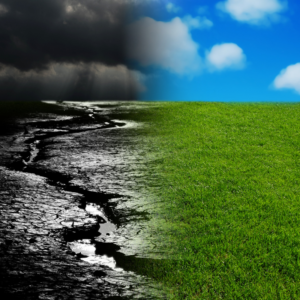Tourism has grown rapidly in recent years, helping economies and connecting people with the beauty of nature. However, this growth has led to increased tourist waste, creating severe environmental problems.
From beaches to mountains, waste left behind harms ecosystems, pollutes natural habitats, and worsens climate change. The problem of this waste has become a global issue, requiring immediate action to protect our environment.
The Problem of Tourist Waste
Waste generated by tourists appears in various forms and has far-reaching effects. Millions of tourists visit scenic destinations yearly, and their activities generate waste that local ecosystems struggle to handle. Waste like food scraps, plastic bottles, and discarded equipment accumulates in popular spots, harming the environment and reducing their natural beauty.
For instance, iconic locations like Mount Everest and Caribbean beaches are now burdened with trash, making once-pristine areas unrecognizable. The increase in tourism waste puts pressure on local waste systems, many of which cannot manage the high volume.
Types of Tourist Waste
Tourist waste falls into different categories, each causing distinct environmental harm.
1. Food Waste
Food waste is a major contributor to the overall problem. Tourists often discard uneaten meals because they dislike the taste or the portions are too large. Hotels and restaurants also generate food waste that is sent to landfills, where it decomposes and releases harmful gases like methane. Globally, tourist activities account for nearly 9% of all food waste.
2. Plastic Waste
Plastic is one of the most damaging forms of waste. Single-use items like water bottles, cutlery, and packaging materials make up significant tourist waste. Over 8 million tons of plastic end up in the ocean annually, harming marine life and polluting waterways. Plastic waste takes hundreds of years to decompose, creating long-term damage.
3. Destination Waste
Popular tourist destinations often bear the brunt of the waste problem. In places like national parks, mountains, and beaches, trash such as oxygen cylinders, camping gear, and disposable plastics are left behind. These discarded items not only tarnish the beauty of these locations but also disrupt local ecosystems.
Environmental Impact of Tourist Waste
Waste significantly impacts ecosystems, endangers wildlife, and worsens climate change.
- Wildlife at Risk: Animals mistake waste like plastic for food, which can lead to injuries, illness, or death. Marine animals like turtles and fish are especially vulnerable to ocean plastic waste.
- Pollution of Natural Resources: Waste left behind pollutes rivers, lakes, and seas, making water unsafe for wildlife and humans. Sewage and trash also often damage coral reefs, which are essential for marine ecosystems.
- Soil Degradation: Excessive waste alters soil composition, reducing fertility. Landfills built to handle waste can lead to long-term soil contamination.
The broader environmental consequences of tourist waste are alarming. Methane emissions from decomposing waste contribute to global warming. Plastic in oceans releases microplastics, which enter the food chain and harm humans and animals.
Tourism’s Contribution to Climate Change
Tourism is responsible for a large share of greenhouse gas emissions. Waste from tourists increases the carbon footprint of travel. The production, disposal, and treatment of waste release carbon dioxide and methane, contributing to the planet’s rising temperature.
Transportation also plays a significant role. Airplanes, buses, and cruise ships tourists emit significant amounts of CO2. A single transatlantic flight, for instance, can produce as much carbon as a person generates in an entire year. This makes managing waste effectively even more critical to reducing tourism’s environmental impact.
5 Smart Ways to Cut Down Tourist Waste
While the challenges are immense, solutions exist to address the problem of tourism waste. Individuals, businesses, and governments all play a role in creating sustainable tourism practices.
1. Reduce Single-Use Plastics
Tourists can avoid single-use plastics by bringing reusable water bottles, cutlery, and shopping bags. Switching to eco-friendly materials like bamboo straws can also help.
2. Promote Recycling
Recycling is crucial in managing waste. Many destinations now have recycling bins and programs. Tourists should educate themselves on local recycling practices and use these facilities.
3. Opt for Sustainable Accommodations
Eco-friendly hotels and resorts are growing in popularity. These establishments reduce waste through practices like composting and minimizing single-use plastics. Travelers can choose these accommodations to reduce their environmental impact.
4. Limit Food Waste
Ordering only what you can eat or sharing meals can reduce food waste. Buffets, though tempting, often lead to overconsumption and discarded leftovers. Being mindful of portion sizes is a simple way to help.
5. Travel Light
Packing fewer items reduces waste generated during travel. It also lowers the energy required for transportation, cutting down on emissions.
Government and Industry Efforts
Governments and industries also play a key role in managing tourist waste. Policies to reduce single-use plastics, invest in better waste management systems, and support eco-friendly tourism are critical.
For example, many countries have banned plastic straws and bags, encouraging tourists and businesses to adopt reusable alternatives. Investment in recycling infrastructure, particularly in high-traffic tourist areas, can further reduce waste.
Tourism operators can also adopt sustainable practices. Cruise lines, for instance, are beginning to implement zero-waste policies and encourage passengers to minimize waste. Tour operators can educate travelers about the impact of their actions and encourage eco-friendly behavior.
The Future of Sustainable Tourism
Tourist waste is a growing challenge, but it’s not insurmountable. The tourism industry can reduce its environmental footprint by increasing awareness and adopting sustainable practices. Simple changes, like reducing plastic use and Recycling, can have a massive impact.
The future of tourism depends on balance. While exploring the world is enriching, it shouldn’t come at the cost of environmental destruction. By making conscious choices, tourists can enjoy their travels while preserving the planet’s beauty for future generations.
Conclusion
Tourist waste has far-reaching environmental impacts, from polluting oceans to harming wildlife and contributing to climate change. However, solutions exist to address this growing problem. By reducing waste, Recycling, and supporting sustainable practices, we can mitigate the harm caused by tourism.
Every traveler has a role to play in protecting the environment. So, the next time you travel, be mindful of the waste you generate and take steps to minimize your impact. Together, we can ensure that tourism supports both people and the planet.
Plan your next trip with sustainability in mind. Minimize waste and protect the environment while enjoying the wonders of the world. Every small action makes a big difference!










